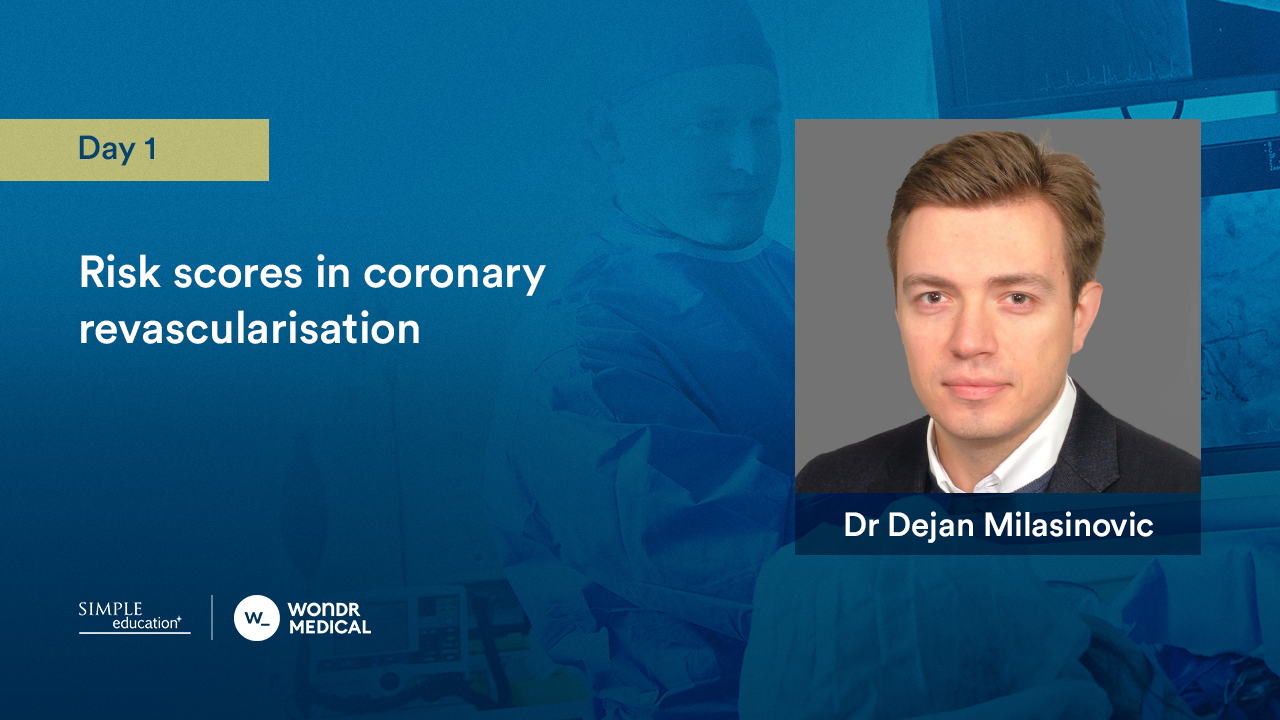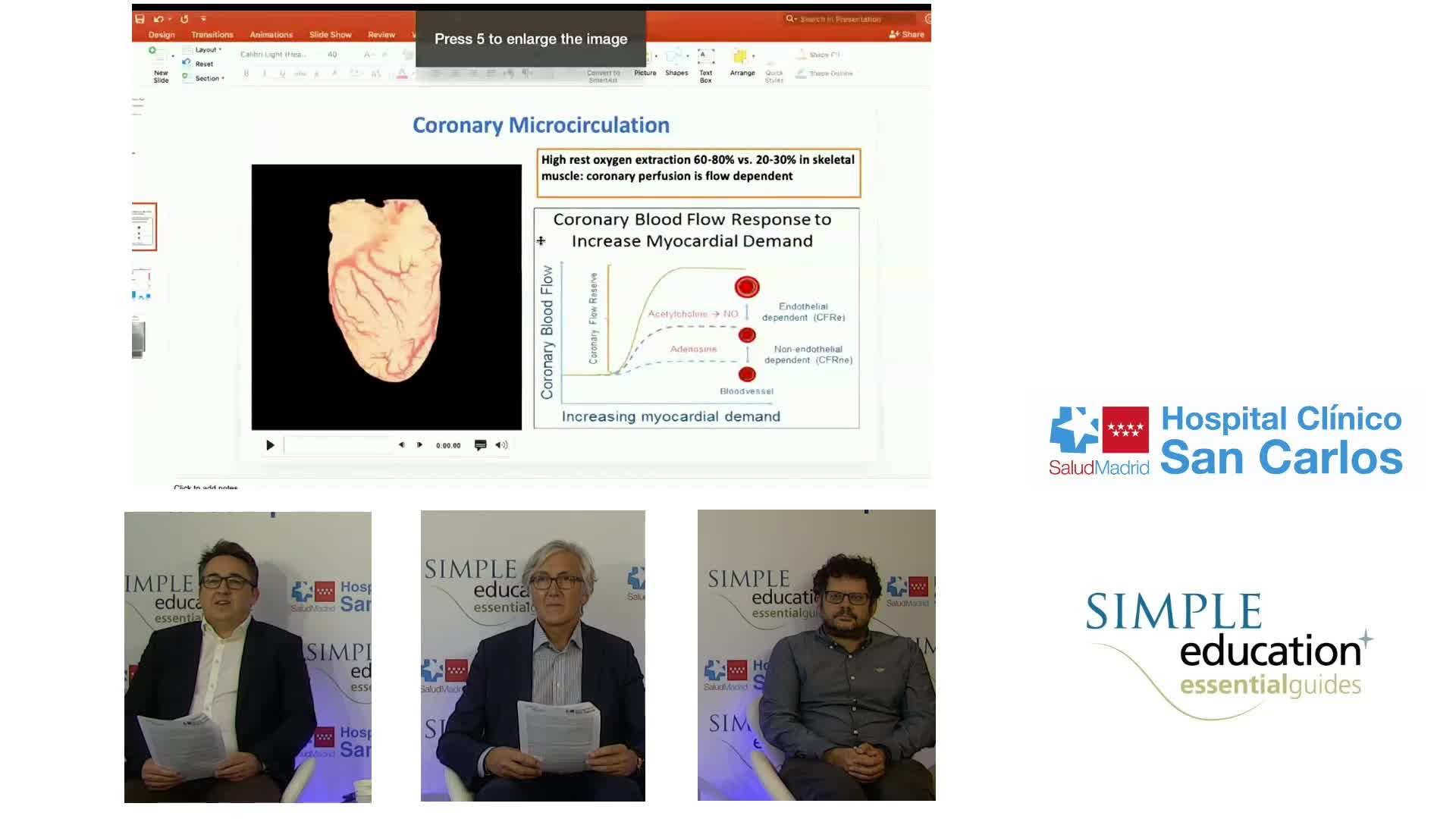- Percutaneous Coronary Interventions (PCI)
- Primary Percutaneous Coronary Intervention (PPCI)
- Live Cases
- Coronary Physiology and Imaging
Assessing Coronary Microvascular Dysfunction in the Catheterization Laboratory
Simple Education, is a leading provider of coronary physiology and intracoronary imaging courses to aid treatment of complex coronary artery disease.
Speakers
Prof Amir Lerman Is an endowed named Barbara Lips professor of medicine and a consultant in the... Prof Amir Lerman Is an endowed named Barbara Lips professor of medicine and a consultant in the department of cardiovascular disease at the Mayo graduate school of medicine. Prof. Lerman graduated from the Technion school of Medicine in Haifa Israel and completed his training in internal medicine, cardiovascular diseases and invasive cardiology at the Mayo Clinic Prof. Lerman serves as an associate chair of the department of Cardiovascular medicine and the Director of the Mayo Clinic cardiovascular research center, the medical director of the chest pain and coronary physiology clinic. Prof. Lerman’s interest is the coronary physiology and imaging and the role of novel therapy of the microcirculation and endothelial function in cardiovascular diseases. Prof. Lerman’s research program is also active and publishes in the area regenerative medicine, innovative technologies and digital health. Prof. Lerman published more than 800 manuscripts, book chapters and reviews; the NIH, AHA, and several foundations support his research.
Prof Javier Escaned is Head of Section (Interventional Cardiology Section) at Hospital Clinico... Prof Javier Escaned is Head of Section (Interventional Cardiology Section) at Hospital Clinico San Carlos / Complutense University (Madrid, Spain). He trained in the United Kingdom as Specialist in Cardiology and obtained his PhD in The Netherlands. Author of >600 indexed scientific articles on interventional cardiology, imaging and physiology (h-index 90) and over 30 years of experience as PCI operator, he regularly lectures and performs live cases at major scientific and educational meetings. He is a recipient of the European Society of Cardiology (ESC) Silver Medal and the Andreas Grüntzig Award for his contributions to the fiedl fo Interventional Cardiology. Main areas of expertise include complex PCI, intracoronary diagnostics and functional coronary angiography. His track record in coronary physiology comprises being investigator on pioneer FFR trials like DEFER (1998), collaborator with Justin Davies in the validation and clinical implementation of iFR, and developer of new tools for the assessment of coronary microcirculation. Editorial roles include Deputy Editor EHJ, Advisory Editor Eurointervention, editor of the textbooks “Coronary Stenosis: Imaging, Structure and Physiology” and “Physiological Assessment of Coronary Stenoses and the Microcirculation". Recent board positions include EAPCI board / Education Committee Chair, ESC WG Coronary Pathophysiology and Microcirculation, EuroCTO Board. Recent trials as Principal Investigator include ADVISE II, DEFINE FLAIR, SYNTAX II, PIONEER IV, Cerebral-Coronary-Connection (C3), DCR4Contrast, INOCA LongCovid and AID ANGIO. Additional interests are philosophy and music.
Dr. Hernán Mejía-Rentería is an Interventional Cardiologist at the Department of Cardiology,... Dr. Hernán Mejía-Rentería is an Interventional Cardiologist at the Department of Cardiology, Hospital Clinico San Carlos, Madrid, Spain. He graduated from the Medical School of Universidad del Valle (Colombia) and underwent specialty training in Cardiology at Hospital Clinico San Carlos, Madrid, Spain. Subsequently, he completed his subspecialty training as Interventional Cardiologist in 2017 at the same institution. Dr. Mejía-Rentería obtained a PhD (Cum Laude) in coronary physiology in 2021 at Universidad Complutense de Madrid. He is a member of European Association of Percutaneous Cardiovascular Interventions (EAPCI) and has published over 70 indexed scientific articles on coronary physiology, functional angiography, intracoronary imaging techniques and Takotsubo Syndrome, and is author of chapters in different academic textbooks. His main research areas at present include coronary physiology assessment with invasive and angiography derived techniques in patients with coronary artery disease or ischemia with non-obstructive coronary arteries.
Dr Dejan Milasinovic is an interventional cardiologist at the Department of Cardiology, Clinical... Dr Dejan Milasinovic is an interventional cardiologist at the Department of Cardiology, Clinical Center of Serbia. He is also an Assistant Professor at Faculty of Medicine, University of Belgrade. His main research interests focus in the fields of the invasive treatment of acute coronary syndromes and complex coronary interventions, with an emphasis on bifurcation PCI and intracoronary guidance. In 2016, Dr Milasinovic received the EuroPCR 2016 Best Abstract award, for a work on the timing of invasive coronary intervention in patients with non-ST-segment elevation myocardial infarction. He is a member of European Association of Percutaneous Cardiovascular Interventions (EAPCI) and has served as program committee member of the annual EuroPCR conference. Dr Milasinovic also serves on the editorial boards of EuroIntervention (editorial consultant) and PCRonline and is the Chair of the EAPCI Young committee.
Tim van de Hoef, MD, PhD, FESC, is an interventional cardiology fellow at the Amsterdam UMC - VU... Tim van de Hoef, MD, PhD, FESC, is an interventional cardiology fellow at the Amsterdam UMC - VU Medical Center (Amsterdam, The Netherlands). He has been involved in intracoronary physiology research since 2010, and his research has covered the wide spectrum of intracoronary physiology assessed by means of invasive coronary pressure and flow measurements, ranging from functional stenosis severity appraisal to assessment of microvascular function in both stable coronary artery disease and acute coronary syndromes. He obtained a PhD (Cum Laude) in invasive coronary physiology in 2015. He has (co-)authored over 90 papers on the topic of coronary physiology, and his recent research has focused on the use of basal conditions for the assessment of epicardial stenosis severity, and the combined assessment of epicardial and microvascular disease to optimize diagnosis and risk-stratification in ischemic heart disease.













